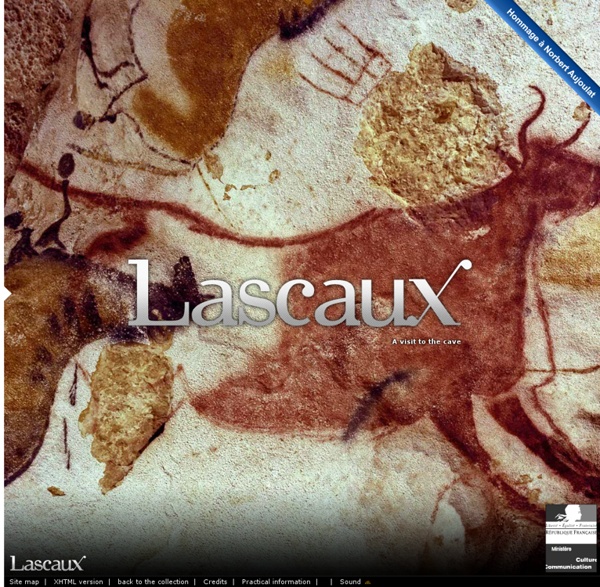Pop Art Poster: Become a pop icon!
First time here? Welcome! We have a lot of fun stuff to play with like ourMotivational Poster maker, Magazine Cover maker, Pop Art poster, and much more! Play as much as you like—everything is free.
Free Art Teaching Resources
This page contains some useful resources and links to help teachers in their art teaching. You will basically be directed to websites where you can find art materials, videos, printables, worksheets, activities, games, and many other teaching ideas that are art informed. 1- Songs for Teaching
Online Tours
Go to content Go to navigation Go to search Change language Accessibility Support the Louvre Home>Collection & Louvre Palace>Online Tours
The Visual Elements of Art
The Visual Elements - Pattern PAUL KLEE (1879-1940) Dream City, 1921 (warercolor and oil) Pattern is made by repeating or echoing the elements of an artwork to communicate a sense of balance, harmony, contrast, rhythm or movement. There are two basic types of pattern in art: Natural Pattern and Man-Made Pattern. Both natural and man-made patterns can be regular or irregular, organic or geometric, structural or decorative, positive or negative and repeating or random. Natural Pattern: Pattern in art is often based on the inspiration we get from observing the natural patterns that occur in nature.
Image and Data Resources
Open Access Policy The Metropolitan Museum of Art creates, organizes, and disseminates a broad range of digital images and data that document the rich history of the Museum, its collection, exhibitions, events, people, and activities. Images of artworks in the Museum's collection fall into two categories: images of works the Museum believes to be in the public domain, or those to which the Museum waives any copyright it might have images of works the Museum knows to be under copyright or other restrictions On February 7, 2017, The Metropolitan Museum of Art implemented a new policy known as Open Access, which makes images of artworks it believes to be in the public domain widely and freely available for unrestricted use, and at no cost, in accordance with the Creative Commons Zero (CC0) designation and the Terms and Conditions of this website. Images of Artworks in the Public Domain
the Solomon R. Guggenheim Museum : Free Texts : Download & Streaming
the Solomon R. Guggenheim Museum by Kandinsky, Wassily, 1866-1944; Dearstyne, Howard, tr; Rebay, Hilla, 1890-1967, ed texts
Discussing Art
The Artful Thinking program takes the image of an artist’s palette as its central metaphor. The artful thinking palette is comprised of 6 thinking dispositions – 6 basic colors, or forms, of intellectual behavior – that have dual power: They are powerful ways of exploring works of art, and powerful ways of exploring subjects across the school curriculum. The Artful Thinking palette comes alive through the use of “thinking routines.”
the Solomon R. Guggenheim Museum : Free Texts : Download & Streaming
Catalog of an exhibition held at the Solomon R. Guggenheim Museum, New York, Feb. 28-April 27, 1986 Topic: Youngerman, Jack, 1926- Includes index Topics: Guggenheim, Peggy, 1898-1979, Peggy Guggenheim Collection, Art, Modern, Art
An Introduction to 100 Important Paintings with Videos Created by Smarthistory
If you have an interest in how the internet has widened the very concept of education, you may well know about Google's Art Project, a digital wealth of free visual art information and viewing opportunities we've featured before. And you more than likely know about Khan Academy, the highest-profile producer of educational videos on the internet. Now, from the combined power of their learning resources comes this collection of video introductions to over 100 important paintings.
A quick beginner’s guide to drawing – Personal Growth – Medium
The basic craft of drawing is about two things: you learn to control your hand and to see. Tip: For the following 6 exercises I suggest you stick with one pen and one particular type of paper (for instance A5). Dexterity — two workouts
Culture - How to create an iconic image
What do you think of when you hear the word ‘icon’? Liz Hurley in that Versace dress? David Bowie?
When an artist looks at a chemical element, what do they see?
Artistic depictions of several chemical elements feature in a new exhibition from today as part of Australia’s celebrations for the International Year of the Periodic Table. They are the work of artists Damon Kowarsky and Hyunju Kim, who worked together since December 2018 on the renditions that will be on display at Quantum Victoria, a specialist science and mathematics centre in the northern suburbs of Melbourne. The project followed a chance meeting between Damon and Soula Bennett, the director of Quantum Victoria. Soula believes Science, Technology, Engineering and Mathematics (STEM) naturally extend to incorporate art. Read more: The periodic table: from its classic design to use in popular culture So Damon and Kim were commissioned to produce a series of 51 artistic interpretations illustrating elements of significance in the story of the birth of the universe from the Periodic Table.
Gordon Bennett Education Resource
Personal background – Family, memory, experience During his childhood in the 1950s and 60s, Bennett lived with his family in Victoria and Queensland. He has described his upbringing as overwhelmingly Euro-Australian, with never a word spoken about my Aboriginal heritage.



